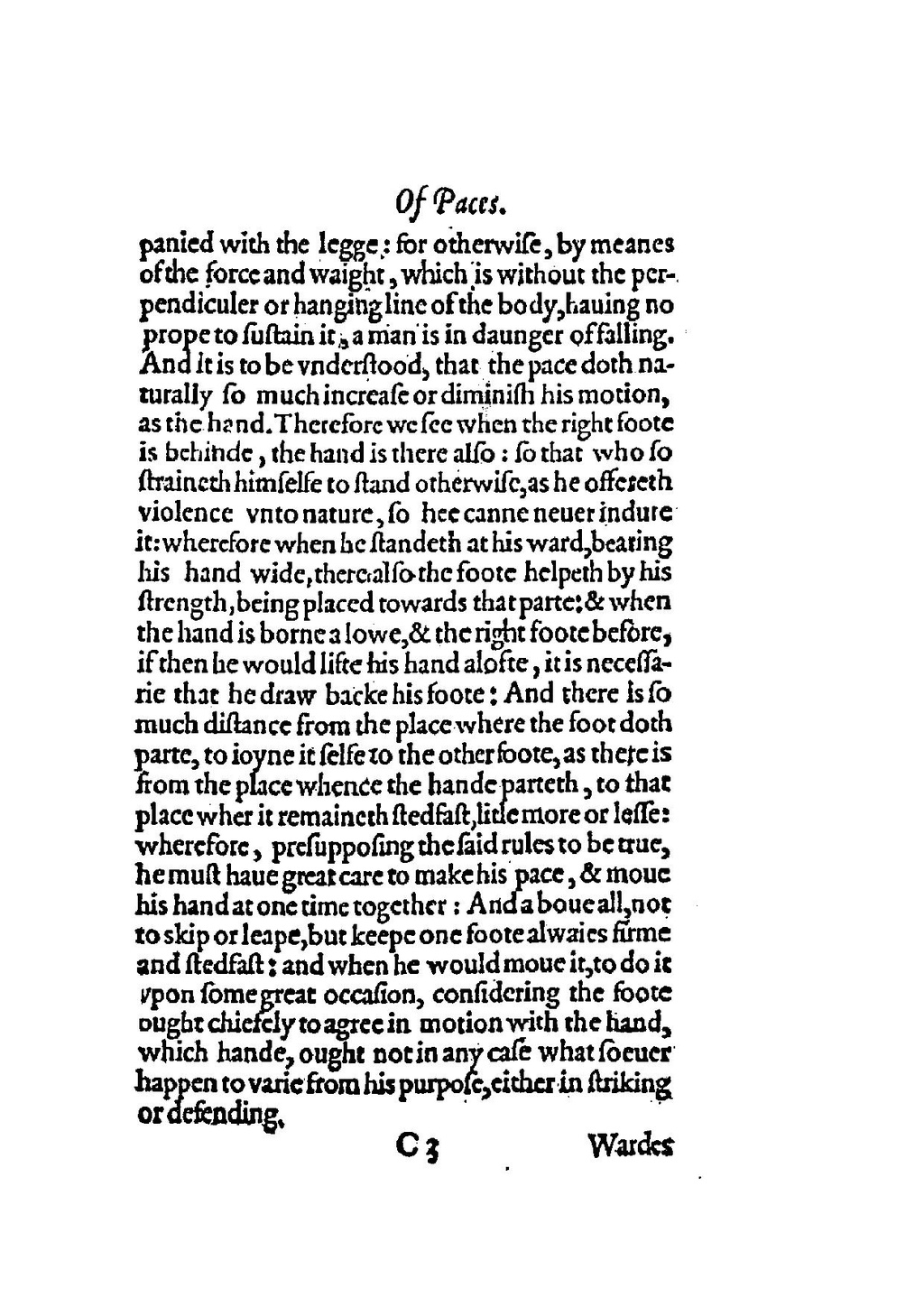panied with the legge: for otherwise, by meanes of the force and waight, which is without the perpendiculer or hanging line of the body, hauing no prope to sustain it, a man is in daunger of falling. And it is to be vnderstood, that the pace doth naturally so much increase or diminish his motion, as the hand. Therefore we see when the right foote is behinde, the hand is there also: so that who so straineth himselfe to stand otherwise, as he offereth violence vnto nature, so hee canne neuer indure it: wherefore when he standeth at his ward, bearing his hand wide, there also the foote helpeth by his strength, being placed towards that parte: & when the hand is borne a lowe, & the right foote before, if then he would lifte his hand alofte, it is necessarie that he draw backe his foote: And there is so much distance from the place where the foot doth parte, to ioyne it selfe to the other foote, as there is from the place whence the hande parteth, to that place wher it remaineth stedfast, litle more or lesse: wherefore, presupposing the said rules to be true, he must haue great care to make his pace, & moue his hand at one time together: And a boue all, not to skip or leape, but keepe one foote alwaies firme and stedfast: and when he would moue it, to do it vpon some great occasion, considering the foote ought chiefely to agree in motion with the hand, which hande, ought not in any case what soeuer happen to varie from his purpose, either in striking or defending.
Wardes

